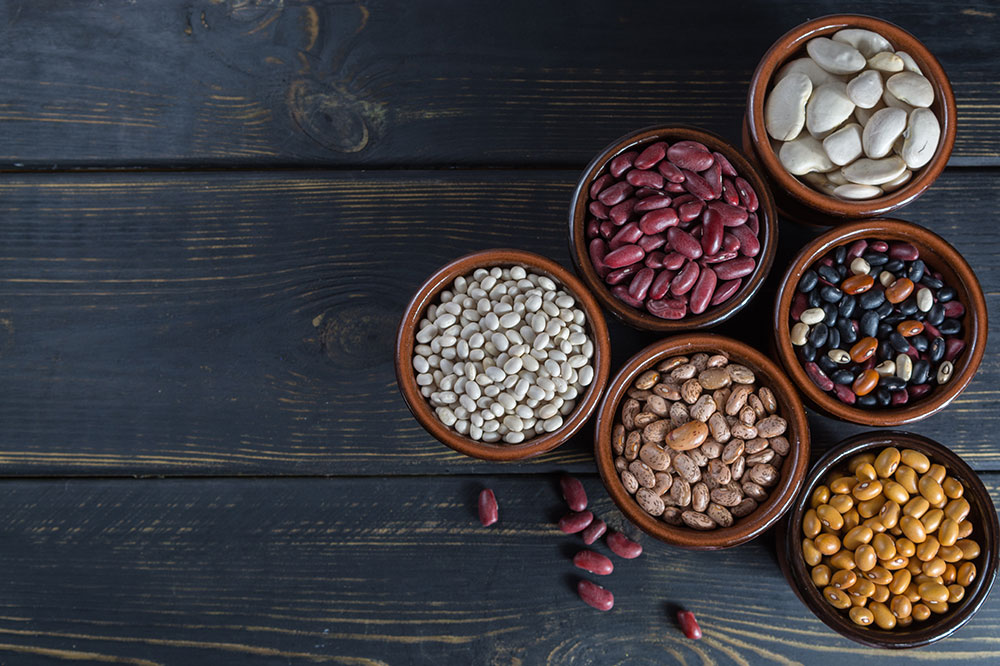Top 5 foods for managing osteoporosis

Consuming healthier food rich in vitamin D, calcium, and other minerals is necessary for the health of your bones and body. You should be able to receive all the nutrients in a well-balanced meal that includes plenty of dairy, seafood, fruits, and vegetables. But, if you’re not receiving these foods, you may need to supplement your meal plan with multivitamins or other treatment methods. This write-up will help you identify suitable foods for managing osteoporosis.
What is osteoporosis?
Osteoporosis makes an individual’s bones brittle and weak, making them fragile, where minor movements like coughing or bending over can break them. Osteoporosis is the cause of frequent wrist, hip, and spine fractures. As you know, bone is a living tissue that undergoes continuous transformation, deterioration, and replacement. Osteoporosis is developed when the production of new bone is insufficient to balance the loss of existing bone.
Symptoms of osteoporosis
At the early stages of bone loss, no symptoms are seen. Gradually your body starts to exhibit severe signs of osteoporosis. A person with osteoporosis may experience the following signs and symptoms after developing it:
- Collapse resulting in back pain or vertebral fracture
- Height decline with time
- A hunched position
- Frequent bone fractures
Top 5 foods that help manage osteoporosis
Protein and calcium are crucial in maintaining bone health as they are vital to bone tissue. The best options include fish, skinless chicken, lean meat cuts, and plant proteins like beans and nuts. Here are the top 5 foods for managing osteoporosis:
Beans
Beans (Legumes) are rich in phytates despite also having calcium, magnesium, fiber, and other minerals. Soaking beans in water for a few hours and then cooking them can lower the phytate content, reducing the negative effect. Including them in your food consumption can have a positive impact on the overall health of an individual.
Food rich in protein, such as meat
Consuming enough protein without going overboard is essential for the health of your bones and entire body. Many older persons do not get enough protein, which may harm bones. The body can also lose calcium if you follow an exceptional high-protein food with multiple portions of meat and protein at every meal.
By consuming enough calcium for your body’s requirements, you can make up for this loss. For instance, dairy products include calcium, which is crucial for solid bones even though they are high in protein.
Salmon
Many nutrients that maintain bone health are present in salmon and other fatty fish. They contain omega-3 fatty acids, which also strengthen bones, and vitamin D, to help your body utilize calcium. In addition, salmon is considered an excellent food to manage osteoporosis.
Almond and groundnuts
Almond butter is a simple way to increase calcium intake because it is made only from ground almonds (and possibly a little salt). There are 111 milligrams of calcium in two tablespoons. Additionally, almonds contain protein, other nutrients, and potassium (240 milligrams in 2 tablespoons), all of which assist in the development of strong bones.
Veggies and fruits
As you know, fruits and vegetables are good health food. The following are some of the top fruits and vegetables for preventing osteoporosis:
- Kale, collard greens, spinach, and mustard greens
- Figs
- Broccoli
- Oranges
- Mushrooms
Vitamins C, D, and calcium are essential for preventing osteoporosis. Eating foods high in certain nutrients and vitamins will help improve bone health and lower the risk for various other illnesses as one ages.
Healthy lifestyle
Your risk of osteoporosis may rise as a result of some unhealthy behaviors. Here are a few factors to consider to prevent yourself from osteoporosis:
- Sedentary way of life: Osteoporosis is more common in persons who spend a lot of time sitting down than in those who are more active. Your bones will benefit from any weight-bearing exercise and posture and balance-enhancing activities, but walking, jogging, jumping, dancing, and weightlifting seem especially advantageous.
- Excessive carbonated drink intake: Regularly consuming more than two carbonated drinks daily raises your risk of developing osteoporosis.
Things to be done to prevent osteoporosis
Maintaining strong bones requires consuming foods to manage osteoporosis and regular exercise. Here are a few tips to prevent osteoporosis through simple practices:
- Between 18 and 50, men and women need 1,000 milligrams of calcium daily. Women at the age of 50 and males at the age of 70 need 1,200 milligrams. Consume this much quality to keep your bones healthy.
- Calcium supplements are essential if you have trouble getting enough calcium from your food. Do take them after getting assistance from trusted healthcare professionals.
- Apart from improving bone health, vitamin D increases the individual’s body’s capacity to absorb calcium. Therefore, people can obtain some of their vitamin D through direct sunshine.
- Exercise can reduce bone loss and help you create strong bones. Exercise is important for your bones no matter at which age you start. Starting to exercise regularly at a young age can keep you away from many diseases.
- Combine weight-bearing, balance, and strength training activities. Your arms, upper spine, and bones can benefit from strength training.
- The bones in your hips, legs, and lower spine are primarily affected by weight-bearing workouts, such as walking, jogging, running, stair climbing, skipping rope, and impact-producing sports.
Final thoughts
Simple nutrient modifications and routine bone density tests can help one stay happy and healthy for years. Osteoporosis prevention is a vital component of getting older. Therefore, one must consult a healthcare professional to begin preventive care, bone density screenings, or other treatments.


